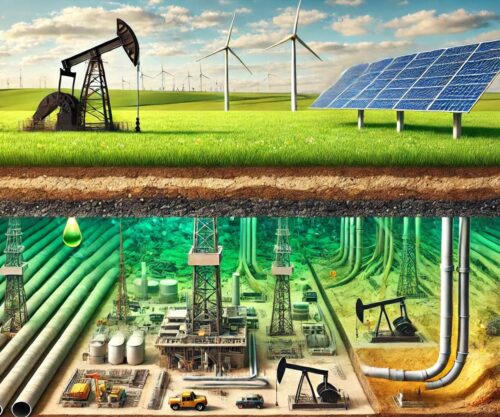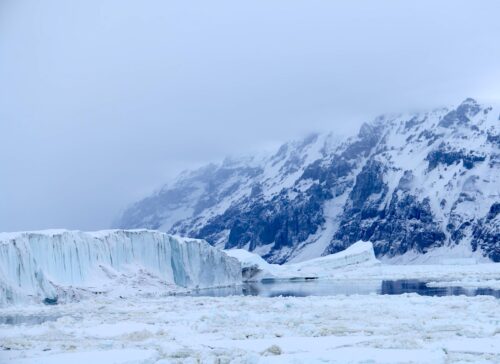
A 2024 study published in PNAS again confirmed climate models fail to simulate what happens in the real world concerning fundamental climate change variables like water vapor, Earth’s most significant greenhouse gas (due to its alleged warmth-enhancing “feedback” capacity). [emphasis, links added]
Per state-of-the-art climate models, specific humidity (SH) should increase as a consequence of CO2-induced global warming.
But 40 years of observations (1980-) show no increasing SH trend over arid/semi-arid regions.
And per state-of-the-art climate models, relative humidity (RH) should remain relatively constant, if not decline slightly as a consequence of CO2-induced global warming.
But 40 years of observations (1980-) do not show a slight declining trend, but rather a declining trend that is “about an order of magnitude more than the models on average.”
In other words, the climate models are wrong by a factor of 10.
The authors did not understate the profundity of these climate modeling failures.
“This represents a major gap in our understanding and in climate model fidelity that must be understood and fixed as soon as possible in order to provide reliable hydroclimate projections for arid/semi-arid regions in the coming decades.”
Now, a new study has once again confirmed there has been an “unexpected” decline in ocean evaporation (which accounts for 85% of the derivation of global atmospheric water vapor) since 2008, the “turning point” (TP) year.
These robust results affirming declining ocean evaporation (Eo) or water vapor trends across two-thirds of the globe – mostly in the Southern Hemisphere – can be found in all four satellite datasets used for the study.
It should be noted that in 2020, Dr. Koutsoyiannis published a paper indicating no increasing trend in global specific humidity since 2008, 1980, or even the late 1940s as predicted by climate models.
Observations do not seem to be sufficiently cooperating with the “water vapor feedback” narrative.

Read more at No Tricks Zone



















Most all Americans don’t trust the Eco-Freaks anymore and frankly I would like to see the Eco-Freaks doing something like Build Birdhouses and Feeders Clean up a Highway and after one of their Earth Day Celebrations and plant some trees instead of running around with stupid signs and banners with stupid slogans on them
The Climate Models are only as good and honest as those who design them
It is a big mistake to publish anything by Ken Richard, who is a master of CO2 Does Nothing disinformation.
The measurements are not very accurate but absolute humidity has increased since 1980. That suggests at least a modest water vapor positive feedback to any warming of the troposphere. Since AH has increased, that must mean more evaporation from the oceans and elsewhere.. Richard is clueless as usual. Relative humidity has declined slightly since 1980 which was not expected. But the greenhouse effect of water vapor depends on absolute humidity, not relative humidity.
Note the trick Richard uses of data mining “over arid/semi-arid regions” which are about 8% of Earth’s surface (40% of land surface)..
Global average absolute humidity, or specific humidity (the amount of water vapor in the air), has been rising since the 1980s, consistent with the long-term warming trend of the planet.
Specific Humidity Increase:
Scientists have observed a significant increase in specific humidity over the Earth’s surface, with water vapor increasing by roughly 1-2% per decade globally.
Warming and Moisture:
This increase in water vapor is consistent with the long-term warming trend in the planet’s average surface temperature.
Clausius-Clapeyron Relationship:
A warmer atmosphere can hold more moisture, which is known as the Clausius-Clapeyron relationship.
Specific Humidity vs. Relative Humidity:
While specific humidity (the amount of water vapor) has increased, the relative humidity (the amount of water vapor compared to the maximum amount the air can hold) over land has decreased, and the trend in ocean relative humidity is less clear.
Regional Variations:
While the global trend is an increase in specific humidity, regional variations exist, with some areas experiencing more significant increases than others.
Impact of Humidity:
Increased humidity can lead to more intense heatwaves and changes in weather patterns.
Water Vapor as a Greenhouse Gas:
Water vapor is a potent greenhouse gas, meaning its increase can contribute to further warming of the planet.
Who would rather read something intelligent from Kenneth Richard using actual studies or somebody with an MBA. Greene has no scientific background but comes on here to tell us what he learned from that MBA.
Richard is a reporter with no science education, and it shows. I have shown how he data mined and lied about absolute humidity. He is very biased to feature studies that claim CO2 does nothing, or CO2 does very little, completely ignoring evidence collected since 1896 that says the opposite.
You responded with a character attack that refutes nothing in my comment. I also have a BS degree, and a climate and energy blog with over 1,063,000 lifetime page views.
https://honestclimatescience.blogspot.com/
Richard is just a “reporter”, and one of the wort among all conservative climate reporters. Joe Bastardi is the worst among conservatives. I read at least 12 articles on climate and energy every day of the year. Almost all by conservative authors. My experience over the past 28 years is the source of my claims. I have nothing personally against Richard or Bastardi. But I am able to evaluate their biases. I don’t care about college degrees like you do — I care about the accuracy of the content in articles on climate science.
Meanwhile only alarmists and those indoctrinated to blindly believe can’t see that the slight average warming is nowhere close to being enough to qualify as an actual change in any climate. The elaborate climate modelling exercises are a waste of resources, valuable only to those whose income relies on them.
Pay attention to measurements, not to mathematical “predictions”.